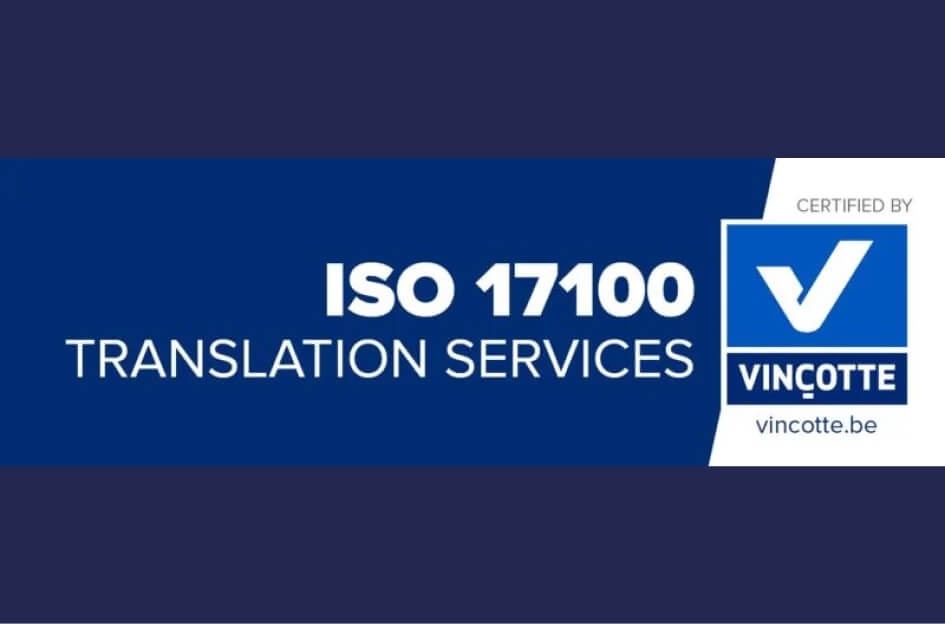Expanding your product to different markets globally is not a simple task. It can be particularly challenging for even the most experienced marketing professionals. If product marketing is a combination of art and science, then international product marketing is like mastering fine art and advanced rocket science.
With the ongoing digitization and the increasing number of businesses going global, their product marketing efforts naturally follow suit. In this article, I will provide valuable advice by highlighting the most common mistakes companies make in international product marketing. By learning from these errors, you can avoid them and help your company thrive beyond its domestic market.
Don’t think your domestic brand will automatically have a positive impact internationally.
Your company’s brand is way more than just a logo and some snappy words. It’s the sum total of how folks see your company and what it offers. But here’s the twist – this perception can shift big time when you cross cultures, move to different countries, and learn new languages. The unfortunate part? Many companies miss the memo on giving this some serious time and energy. Not putting in the effort to build a local brand could mean waving goodbye to long-term success in the market.
Some companies fall into the trap of assuming that their home market prowess will magically sprinkle success in new territories. Well, turns out, that’s not quite how the cookie crumbles. Crafting a strong brand in any corner of the world takes patience. It means keeping your message consistent, laying out a clear value offer, and delivering something meaningful to your local customers. The secret sauce? Your message needs to speak their language and feel like you’re one of them, not just an outsider trying to blend in.
If you don’t nail down that value proposition or messaging in a new market, you’re practically signing up for a confusing situation. This can lead to slower existing product adoption compared to what you’ve got going on back home. Sometimes, business leaders rack their brains over subpar local market performance metrics, searching for answers to the gap. But more often than not, the answer’s pretty straightforward: if you don’t put in the effort to build local brand awareness, the rest of those market metrics are gonna take a hit.
Now, here’s a little tale from the trenches – building local brand awareness is like the Everest challenge for marketing and sales honchos at global competition. The tricky part? These cries for local investment in brand-building often end up as echoes in the wind. It’s like folks forget the importance of the local flavor. But here’s the real deal – if you don’t grease the wheels for brand-building, don’t be shocked if the demand generation machine starts sputtering.
Let’s take a glance at one country with a true champ in the game: Samsung. Hailing from South Korea, they’ve managed to nail the art of international product marketing mix and brand-building. Take India, for instance. Samsung dived headfirst into the local Indian market scene, splurging on tailoring products and marketing campaigns for the locals. They even roped in local influencers to acquire local knowledge and spread the word. It’s like they designed products with the local flavor in mind.
Never Ignore Your Local Competition
Digging into your competition in each market is like having a secret weapon to understand where your product stands locally. This insight isn’t just a nifty tidbit – it’s the key to setting your product apart and giving it that special sparkle. If you dive into a new market without sizing up the local competition, well, let’s just say your new product just might end up a wallflower at the party, and nobody wants that. Your market share could be the one taking a hit.
You know what’s funny? Many companies, even the big shots, tend to fixate on rivals in their home turf. You know, that one big market they’re crushing it in. But here’s the catch – by not casting their net wider, they’re missing out on understanding who their biggest rivals are in local markets. It’s like focusing on the sideshow when the main event’s right in front of you. And this gets amplified when you’re tackling the international product marketing arena.
Now, let’s talk about those snazzy product marketing messages. Yeah, the ones that are supposed to turbocharge sales. But hold up – if you want these messages to hit the bullseye, they’ve gotta tackle the everyday worries, headaches, and threats that sales folks encounter while chatting with customers. The interesting thing is these issues are like chameleons – they change in every market. So, if you’re considering a one-size-fits-all approach, think again.
Oh, let’s not forget the ol’ fear of complexity. Everyone loves keeping it simple, right? But in the world of international growth, those differences matter – and they matter big time for your sales numbers, both now and in the long run.
Customizing your product marketing for each country isn’t just a suggestion – it’s a necessity, especially for international market players. Ignoring this could lead to two not-so-great scenarios. First, your star salespeople in new markets might take the reins and start crafting their own materials, going off-script. Or, they might throw in the towel and jump ship to a local rival. Neither option is a winner.
And speaking of winners, let’s talk about Uber. They show why studying local competitors in every market they step into is like a secret sauce for success. When Uber rolled into China, they weren’t alone in the ring – Didi Chuxing was giving them a run for their money.
So, Uber did what any smart player would – they dove into market development and research, soaked up the local vibe, and cooked up a plan tailored to Chinese tastes. Think lower prices, smoother payments, and top-notch service. They even teamed up with local businesses and groups to make sure their brand was the one people remembered.
And guess what? Despite the costs and the challenges, Uber’s moves paid off big time. They etched their name into the Chinese market and expanded their customer base and market slice. Yep, they eventually passed the torch to Didi Chuxing, but their Chinese journey taught them one golden rule: researching local rivals and dishing out customized strategies for each market is the real deal.
Avoiding Cultural Missteps: The Importance of Cultural Awareness
Different cultures have different values, beliefs, and behaviors. To effectively market your product internationally, it’s important to understand the cultural nuances of your target markets. You need to tailor your message to resonate with your audience in each market. What’s complicated about living in a globalized world is that often, product marketing campaigns can spread quickly.
Especially when there is humor involved, expensive, well-intentioned campaigns that might work well in a company’s home country or market can fall flat in certain markets, and can actually do damage to brand managers in other markets.
What’s the reason so many companies fail to consider cultural difference? I think the reason is quite simple: because they’re unaware of what those differences might be. It’s really hard for someone to imagine how people in another country or language might react to a product marketing campaign if they simply don’t know much about that target market.
Often, product managers and marketing leaders aren’t given much access to regional or in-country resources. And conversely, at some companies, they do have access but continually fail to listen to those voices. It’s hard to build bridges sometimes across geos, to enable these types of teams to work harmoniously together, but it’s important for any company’s long-term global market success.
For Example
Apple serves as a great example of a tech giant that really gets how diverse cultures tick. In China, for instance, the company has gone extra mile to tweak its products and services – making everything match for the local scene. This kind of thoughtful approach makes their local product marketing sing!
Take Apple Pay, for instance. It’s all set to groove with UnionPay, which happens to be China’s very own national bankcard payment network. And, oh, is that a big deal there! Plus, they’ve added nifty features to the iPhone camera app that specifically cater to Chinese folks. Think recognizing and translating Chinese characters – a true game-changer.
But that’s not all. Apple’s not just sprucing up its tech – they’re going all in on the Chinese market. More stores, more job opportunities, more education and a whole lot of support for local developers. They’re not just selling gadgets – they’re weaving themselves into the local fabric. Now that’s some serious dedication!

Don’t Make This Mistake: Neglecting Local Influencer Partnerships
Influencer marketing is a fantastic way to catch the eye of folks in the neighborhood. It’s all about teaming up with familiar faces and popular brands that people adore, and having them give your company and products a shout-out.
This move isn’t just about gaining street cred – it’s also a ticket to reaching a bigger bunch of people. This tactic becomes even more crucial when you’re introducing a brand from another corner of the world to a fresh market where your name might not ring any bells. If you skip teaming up with local influencers, your marketing might fall a bit flat and struggle to make waves.
For Example
A classic example of a company acing this company’s strategy is Airbnb. When they stepped into the Japanese market, they joined forces with homegrown celebrities and social media hotshots to spread the word about their offerings. They didn’t stop there – they also buddied up with influencers in other markets, like India and China, to earn some street cred and connect with the locals. These smart partnerships have been Airbnb’s secret sauce in conquering different markets and showing their dedication to getting to know wider audience and tapping into local vibes.
Always localize the Right Content
You know, companies sometimes tumble into this trap of thinking they’ve got to tweak everything for new markets, especially those speaking a whole different language. But that’s not always the name of the game – it could actually end up being a bit of a wallet-drainer. The smarter move? Pour your energy into localizing about 20% of the content that really vibes with your target audience.
Some folks tend to make to give every single piece of content a local spin. Unfortunately, this approach has its flaws. Figuring out what content is the real MVP can feel like solving a puzzle, and most companies find themselves juggling to sort their existing content into neat categories.
Trying to figure out what to prioritize? It’s like climbing a steep hill. But here’s the hack – having someone who’s a maestro of the market and holds the power to make decisions that fit the bill is key. These regional leaders who get the big picture and international strategies? They’re like the GPS guiding which content gets the local treatment and in what order.
Golden Rule
Remember, not all content carries the same weight – and this golden rule stands strong in marketing. And guess what? It’s a universal truth even when you’re doing marketing on a global scale. The real deal is, you don’t have to tweak every single campaign, email, asset, or content piece. What you really gotta focus on is the content that makes the local market go, “Hey, that’s speaking our language!” Even if it means putting in some extra hours to get it right. This approach is your ticket to exploring local flavor, customized marketing, and a dash of creative magic.
Seek to Bridge the Very Real Gaps Between Domestic and New Markets
Now, here’s the real game-changer – tapping into the wisdom of your local team members. They’ve got the local scoop that no one else has, and they’re like your compass guiding your content’s localization journey. They’re the ones who can steer your efforts in the right direction.
And oh, speaking of expanding business to new horizons – that’s like diving into a whole new adventure. It’s like a startup journey all over again for the local and regional management teams. They’re like the unsung heroes dealing with operational hurdles and trying to make it big in a new playground. They’ve got their own set of challenges. Bias buddies like proximity bias and familiarity bias tend to sneak into the picture. They sway decisions and budgets, often giving the domestic market a front-row seat while the new markets sit in the back.
Conclusion: Key Takeaways in International Product Marketing
In a nutshell, global products marketing holds immense significance for businesses aiming to take their products global. It’s the ticket to introducing your offerings to diverse customers across the world and boosting your revenue. Remember, a couple of vital pointers can go a long way. Start by delving into research about your target market – understanding its nuances is key. Tailor your product to align with the local culture, and don’t forget to deploy savvy marketing strategies that truly resonate. By following these steps, businesses can significantly up their game in international markets. So, if you’re eyeing global brands stardom for your own product lines, remember that international product marketing is the name of the game!




